Construction Photos of soma's Thematic Yeosu EXPO Pavilion
By Bustler Editors|
Friday, Mar 9, 2012

Related
Austrian firm soma is updating us on the latest construction status of their “One Ocean“ Thematic Pavilion for the EXPO 2012 in Yeosu, South Korea. The pavilion is a major and permanent building for the Expo and is scheduled for official opening on May 12, 2012.
In 2009, soma’s design proposal was selected as the first prize winner in an open international architecture competition (previously on Bustler), and the office was commissioned to plan the entire building. The building will house two kinds of exhibitions that will give the visitors an introduction to the EXPO’s theme, The living Ocean and Coast.
Project Description from the Architects:
MAIN CONCEPT
As a major and permanent facility the Thematic Pavilion embodies the Expo’s theme “The Living Ocean and Coast” in manifold ways. We experience the Ocean mainly in two ways, as an endless surface and in an immersed perspective as depth. This plain/profound duality of the Ocean motivates the building’s spatial and organisational concept. Continuous surfaces twist from vertical to horizontal orientation and define all significant interior spaces. The vertical cones induce the visitor to immerse into the Thematic Exhibition. They evolve into horizontal levels that cover the foyer and become a flexible stage for the „Best Practice Area“.
Continuous transitions between contrasting experiences also form the outer appearance of the Pavilion. Towards the sea the conglomeration of solid vertical cones define a new meandering coast line, a soft edge that is in constant negotiation between water and land. Opposite side the pavilion develops out of the ground into an artificial roof–landscape with gardens and scenic paths. The topographic lines of the roof turn into lamellas of the kinetic media façade that faces the Expo’s entrance and the “Digital Gallery”.
URBAN CONTEXT
The building will be erected in a former industrial harbour along a new promenade embracing the “Big O”. Bridges will connect the pavilion to the EXPO site. After the Expo and the aspired improvement of water quality the promenade will be transformed into an “urban beach” offering leisure activities to the public.
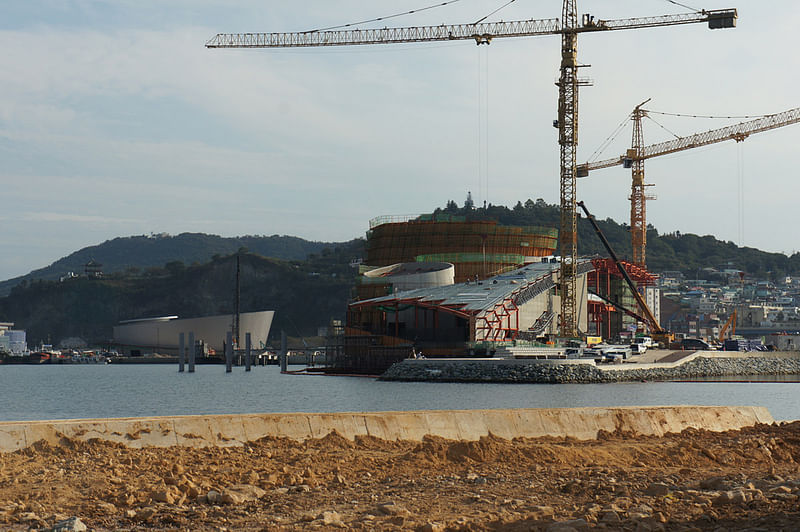
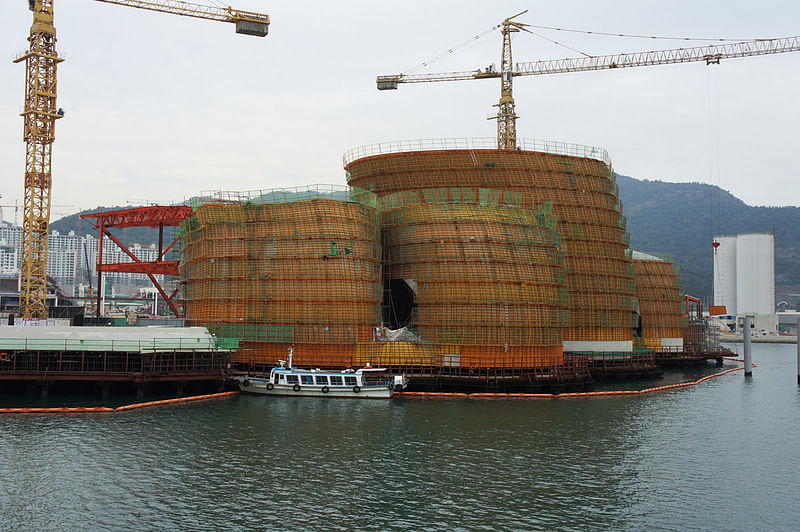
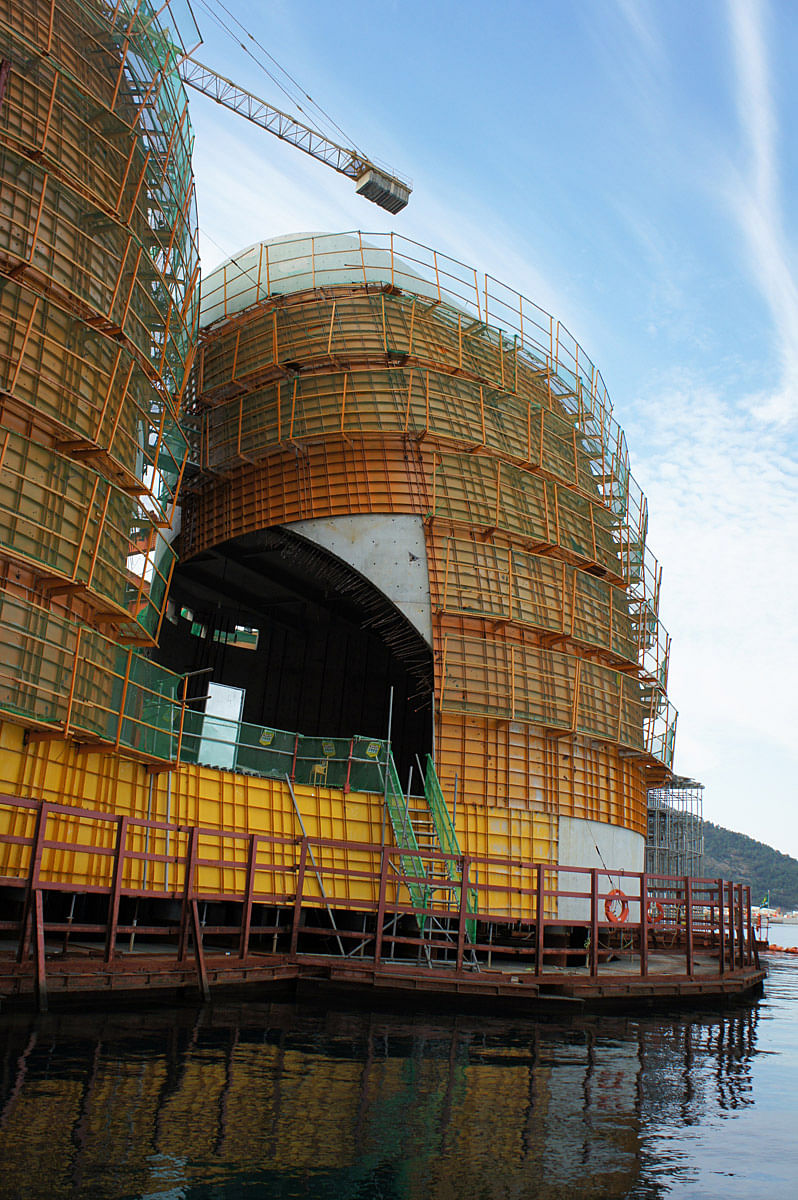
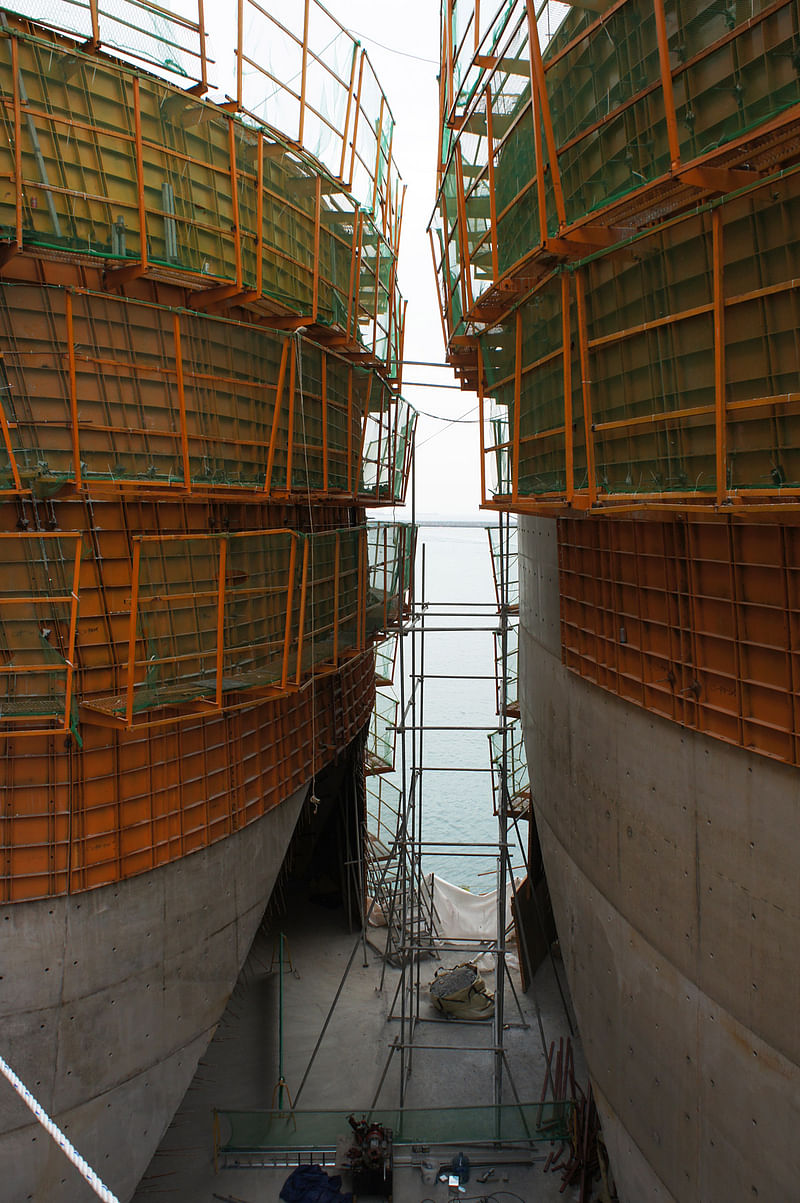
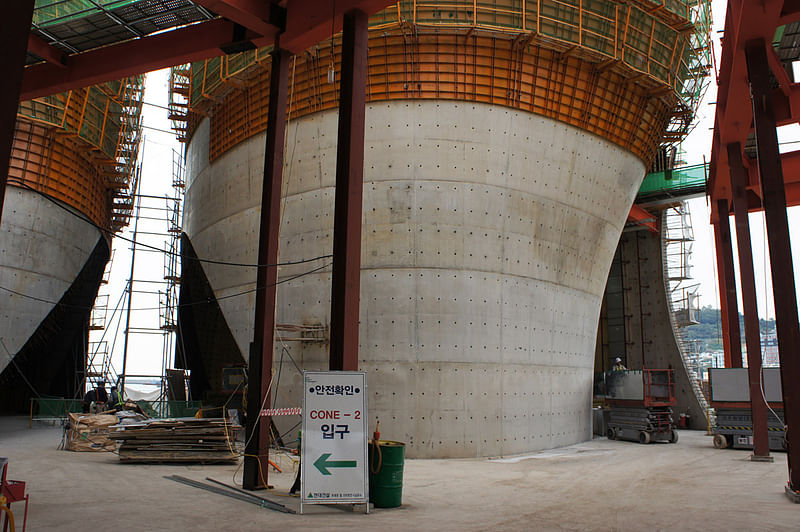
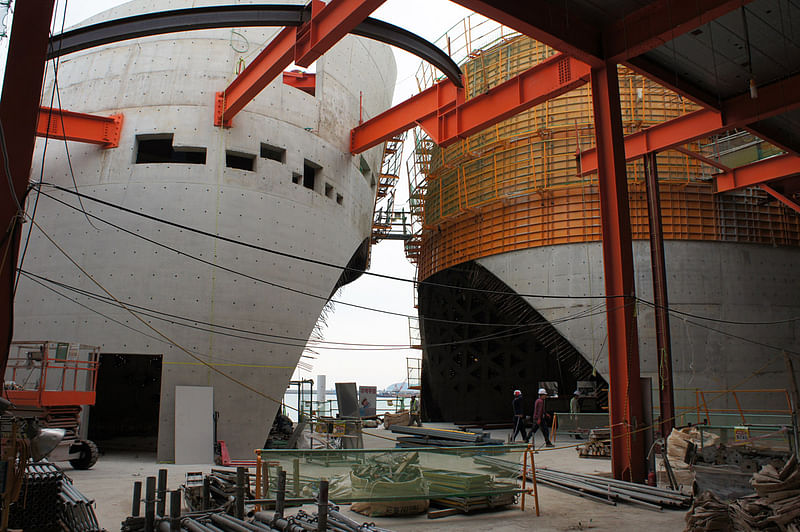

PROGRAM AND CIRCULATION
The main entrance is situated on Ocean Plaza, which is partly covered by the pavilion to achieve a shaded outdoor waiting area. The space boundaries of the open foyer are defined by the twisting surfaces of the cones. The interstitial spaces between them frame the view onto the Ocean and create niches for the visitors to take a pause from the exhibition. The sequence of pre-show, main show and post show is spatially modulated: Lingering through the first two small cones with a ceiling height of 8m people arrive at the main show, an breath-taking 20 meter high space of 1000sqm. After the show people arrive again at the lower and more intimate post-show that leads to the café and a swimming island in the open water, where they can relax and experience the movement of the Ocean. Visitors with a deeper interest can take the escalator to the second level, where the Best Practice Area, an open, flexible day-lit space is located. Here institutions will present their research in fields like renewable energies or marine technology. From the foyer or the Best Practice Area visitors can take stairs or lifts up to the roof top garden. The roof-landscape functions as a third exhibition area, which invites people to relax and enjoy a 360-degree view over the Expo site. Roof gardens will be covered with plants of the local coast. To leave the pavilion people stroll down a meandering ramp with panoramic views onto the surrounding Ocean and the islands. Service functions, like offices, technical and storage areas are located underneath the landscape part of the building. After the period of the EXPO the building will house public and educational facilities.
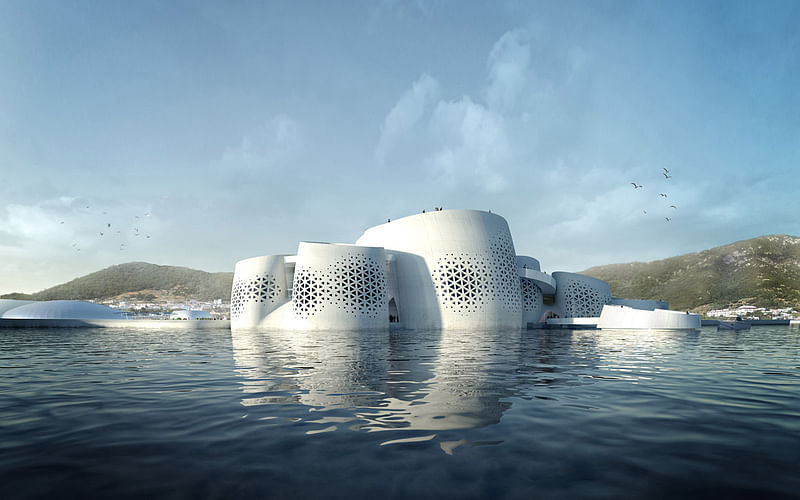

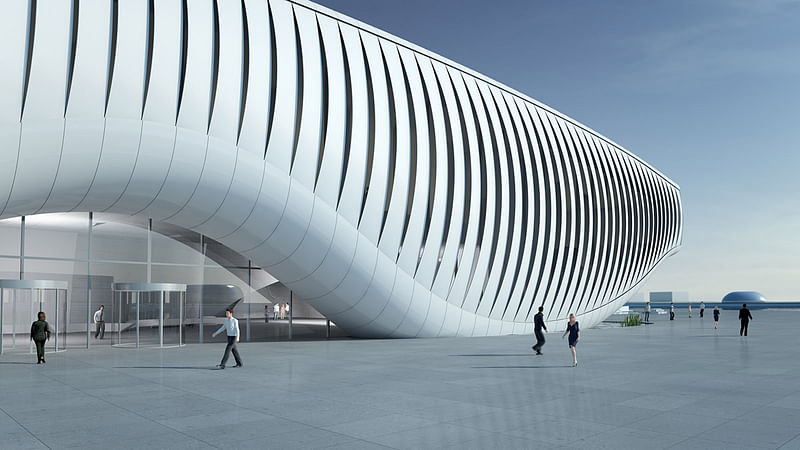
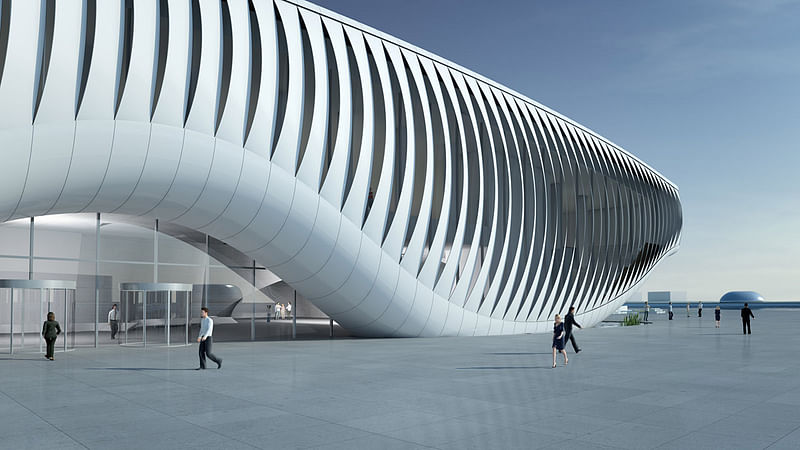
CLIMATE CONCEPT
The foyer and the Best Practice Area are naturally ventilated. Therefore the interstitial spaces between the cones were orientated towards the prevailing wind direction to create air nozzles. In the large vertical exhibitions, air will be infused through the floor, to reduce the amount of conditioned volume. During daytime the kinetic lamellas are used to control solar input. They will be operated by energy gained through solar panels on the roof. The building’s performance was analysed by detailed simulations to reduce energy consumption and increase efficiency.
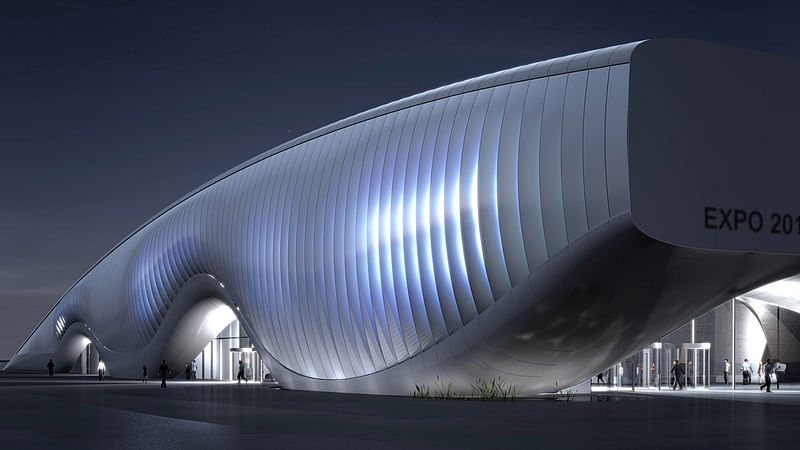
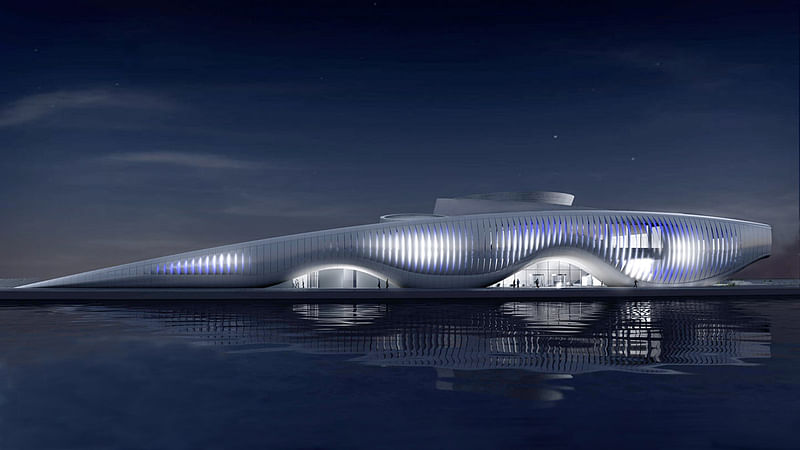
BIONIC KINETIC FACADE ANALOGUE EFFECTS
As a counter part to the virtual multi-media shows of the Thematic Exhibition, the kinetic façade like the overall architecture of the pavilion evoke sensuous experiences through analogue means. Beside their function to control light conditions in the foyer and the Best Practice Area the moving the lamellas will create animated patterns on the façade. The choreography will span from subtle local movements to overall waves effecting the whole length of the building. After sunset the analogue visual effect of the moving lamellas is intensified by linear LED bars, which are located at the inner side of the front edge of the lamella. In opened position the LED can light the neighboring lamella depending on the opening angle. The bionic principle of the lamellas produce a consistent effect: Geometry, material, movement and light are seamlessly interrelated. The longer the single lamella - the wider the opening angle - the bigger the area which is lit. As a moving, emotional experience the kinetic façade combines the sensation with the sensational while communicating the EXPO’s theme in an innovative and investigative way.
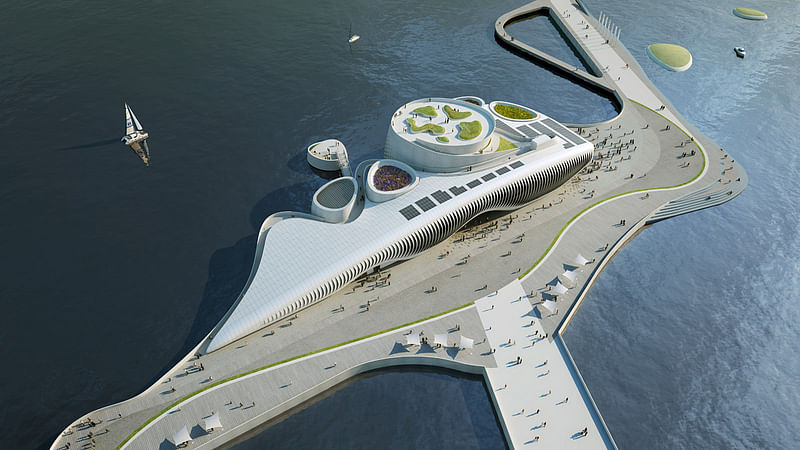
Project Details:
Project: “One Ocean“, Thematic Pavilion EXPO 2012 Yeosu, South-Korea
Client: The Organizing Committee of Expo 2012 Yeosu
Location: Yeosu, South Korea
Area: 6,900 square meter
Construction: September 2010 - February 2012
Architect: soma, Austria
Local partner: dmp, Seoul
Local representative: Ralf Zabl
Consultants:
Kinetic facade: Knippers Helbig, Stuttgart
Climate design: Transsolar, Stuttgart München New York
Structural engineer: Brandstätter ZT GmbH, Salzburg
Structural engineer CD Phase: Yeon and Partners
Light design: podpod, Vienna
Landscape: Soltos
Climate design (competition): Jan Cremers, Stuttgart
Find more plans and concept diagrams in the image gallery below.

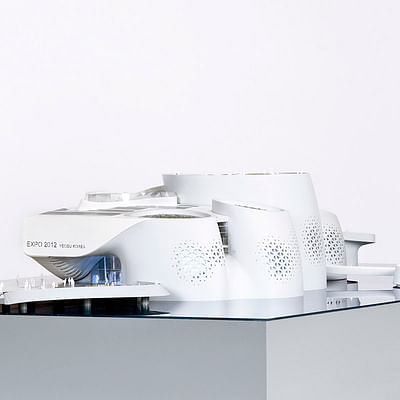
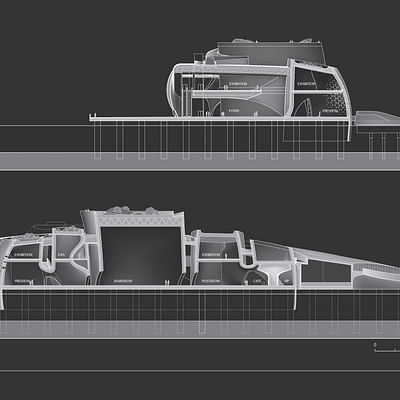
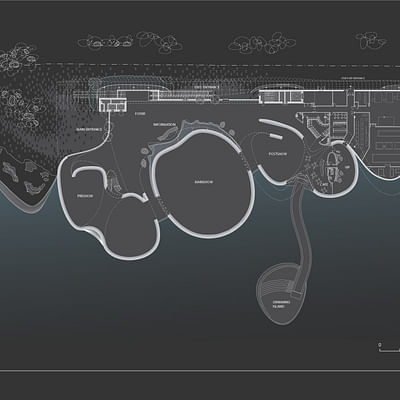
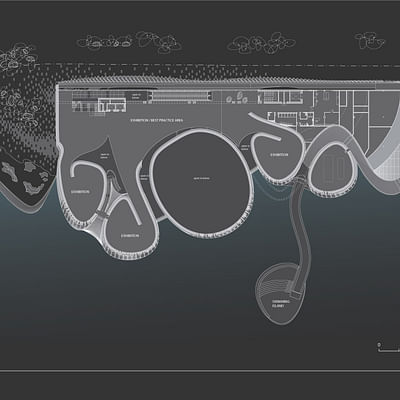
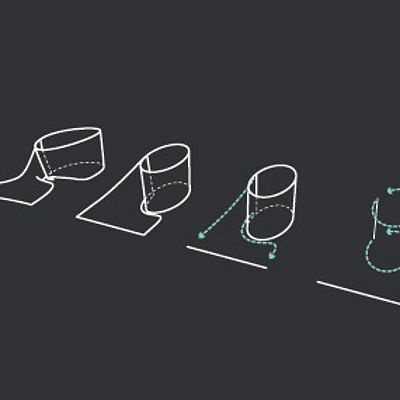
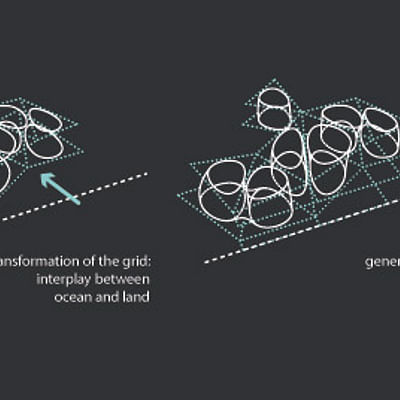

Share
0 Comments
Comment as :